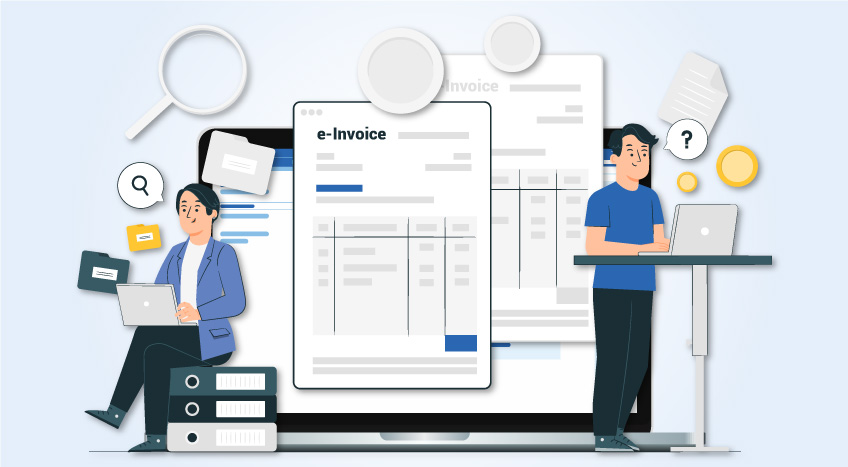- Entitlement for input tax deductions
- Tax refund for new business or start-up establishment
- Price competitiveness
Businesses who are not required to mandatorily register under VAT, are given an option to voluntarily apply for VAT registration. They can voluntarily register if the annual supplies or the taxable expenses incurred are not less than the voluntary registration threshold limit.
The voluntary registration threshold is 19,250 OMR which is exactly 50% of the mandatory registration threshold.
| Who Should Register Under Oman VAT? | Stay VAT Compliant with TallyPrime’s Amazing Capabilities |
While the law permits to register voluntarily, the important question is that should the businesses voluntarily apply for VAT registration? Is there any benefit of voluntary VAT registration?
The answer is Yes. There are some benefits of VAT registration and these are significant if you are a new business or start-up establishment. Let’s understand the business benefits of voluntary VAT registration.
Entitlement for input tax deductions
Being registered under VAT entitles the business to claim input deduction. In other words, the VAT that is paid on your purchases can be claimed as input tax and can be used to reduce your VAT payables. Let’s make it easier with an example.
|
Purchase |
|
|
Purchase Value |
VAT 5% |
|
5000 |
250 |
|
700 |
35 |
|
1000 |
50 |
|
Total Input VAT |
335 |
|
Sales |
|
|
Sale Value |
VAT 5% |
|
8000 |
400 |
|
400 |
20 |
|
600 |
30 |
|
Total Output VAT |
450 |
From the above example, the total VAT paid on the purchase is 335 OMR which is known as input VAT. The total VAT collected on sales 450 OMR known as output VAT.
Now, you are entitled to claim an input VAT deduction of 335 OMR and can set-off against output VAT of 450 OMR. The final VAT payable will be 115 (450–335). The input tax claim can be done only if you are registered under VAT. Else, the entire VAT paid on purchases should be treated as a cost.
Tax refund for new business or start-up establishment
As defined in the VAT, a business can voluntarily register even if the expenses spent in the last 12 months, including the current month exceed the voluntary registration threshold. Also, if the total expenses are anticipated to exceed the threshold in the next 12 months, including the current month, you will be allowed to voluntarily register.
In simple words, you can apply for VAT registration, even if your outward supplies (sales) are not exceeding the threshold, but expenses do so.
Now, when you apply this from the context of a new business or start-up establishment, usually you have a huge expense incurred as you start, and it takes a while for your sales to pick up. Now, being registered under VAT helps you claim the VAT paid on your purchases/expenses which otherwise would end up as cost.
Let’s say, if you have paid 300 OMR VAT on your purchases/expenses and collected VAT of 100 OMR on sales, you can adjust 100 OMR against VAT collected on sales and the remaining 200 OMR can be claimed as a tax refund. The element of expense in voluntary registration is included to help the businesses to take benefit of input VAT deduction.
Price competitiveness
Input VAT deduction can be claimed by businesses that are registered under VAT. The VAT which is paid on purchases/expenses can be claimed and adjusted against the VAT collected on the sales.
Now imagine, if you are not registered under VAT, but pay 5% VAT on your purchases/expenses. This makes your product costlier by 5% as compared to registered business. The reason is, if you are unregistered, VAT paid on purchase should be treated as cost and you are left with no option but to inflate the price.
|
Registered Business |
Unregistered Business |
||
|
Purchase |
100 |
Purchase |
100 |
|
VAT |
5 |
VAT |
5 |
|
Total Purchase Invoice |
105 |
Total Purchase Invoice |
105 |
|
Cost |
100 |
Cost (Purchase +VAT) |
105 |
|
Input VAT |
5 |
Input VAT |
0 |
|
Profit |
10 |
Profit |
10 |
|
Selling Price (cost + profit) |
110 |
Selling Price (cost + profit) |
115 |
If you observe the unregistered business, the cost is 105 which includes the VAT. The reason is, as an unregistered business, the law does not permit them to claim input VAT deduction on purchase and as a result, it is added to the cost. Thus, the selling price is more than the registered business.
Other than the above, being VAT registered add’s up to the business's credibility and reputation. While there are some compliance responsibilities such as invoicing, books of accounts, filing returns, but there are numerous business benefits as well.
On the compliance responsibilities, you can manage those with ease using VAT software. TallyPrime, a business management software, now supports complete VAT compliance for Oman VAT.
Why wait? Book a free demo and find out how easy it is to manage VAT.
Read more on Oman VAT









